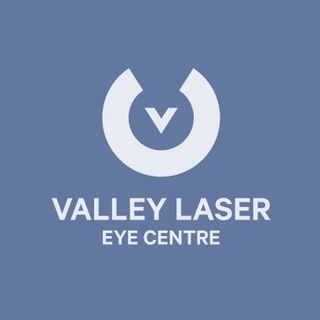Cataracts are a common age-related eye condition caused by the natural clouding of the eye’s lens, which affects millions of people worldwide. As cataracts progress, they can significantly impact vision quality, making it difficult to perform everyday tasks such as reading, driving, or watching television. At Valley Laser Eye Centre, we are committed to providing effective solutions for individuals affected by cataracts, helping them regain clear vision and maintain their quality of life. In this blog post, we will explore the essential aspects of cataracts, their impact on vision, and the comprehensive treatment options available at our centre.
Cataracts develop when proteins in the lens of the eye clump together, forming areas of cloudiness within the lens. There are different types of cataracts, including nuclear, cortical, and posterior subcapsular cataracts, each affecting a specific part of the lens and resulting in varying symptoms and degrees of vision impairment. As cataracts progress, they can cause symptoms such as blurred or hazy vision, increased sensitivity to glare, difficulty seeing at night, and a fading of colours.
The formation and progression of cataracts are generally linked to the natural aging process. However, factors such as previous eye injuries, certain medications, and medical conditions can contribute to their development. A comprehensive eye examination is essential for diagnosing cataracts and determining their severity and the appropriate course of treatment.
At Valley Laser, we offer state-of-the-art cataract surgery to remove the cloudy lens and replace it with an artificial intraocular lens (IOL). Our experienced eye care professionals work closely with each patient to determine the most suitable IOL type based on their unique needs, taking into consideration factors such as visual demands, pre-existing refractive errors, and lifestyle preferences. By staying informed about cataracts and the treatment options available, you can feel confident in managing this common condition and maintaining optimal vision throughout your life.
Impact of Cataracts on Vision
As cataracts progress, they can significantly impact vision quality, making everyday tasks challenging and affecting the overall quality of life. Some common symptoms of cataracts include the following:
1. Blurred or hazy vision: Cataracts cause the lens of the eye to become cloudy, scattering light instead of focusing it properly on the retina. This leads to a decrease in visual acuity and difficulty seeing fine details or reading small print.
2. Increased sensitivity to glare: The scattering of light caused by cataracts can create glare or halos around bright light sources, especially noticeable when driving at night or during sunny days.
3. Difficulty seeing at night: Reduced light transmission through the lens due to the presence of cataracts can make it challenging to see and navigate in low-light situations.
4. Fading of colours: As cataracts progress, they can cause colours to appear faded or washed out, reducing the vibrancy of the visual world.
Diagnosing Cataracts
A comprehensive eye examination is crucial for diagnosing cataracts, assessing their severity, and determining the appropriate course of treatment. During an eye exam, your eye care professional will evaluate the overall health of your eyes and check for any changes in vision or ocular conditions. Some common tests used to diagnose cataracts include the following:
1. Visual acuity test: This test measures your ability to see at various distances, typically using a Snellen chart with letters of decreasing size.
2. Slit-lamp examination: The slit-lamp is a specialized microscope that allows your eye care professional to examine the structures of your eye in detail, including the lens, to check for signs of cataracts.
3. Dilated eye examination: During this exam, drops are placed in your eyes to dilate (widen) your pupils, giving your eye care professional a better view of the lens and its condition.
Based on the results of these tests, your eye care professional can determine the severity of your cataracts and recommend appropriate treatment options.
Comprehensive Treatment Options
At Valley Laser, we offer state-of-the-art treatment options for cataracts, helping patients regain clear vision and maintain their quality of life. Cataract surgery is the primary and most effective treatment option for this condition.
Cataract Surgery Overview
Cataract surgery is a highly effective procedure that involves removing the cloudy lens and replacing it with a clear, artificial intraocular lens (IOL). The surgery is typically performed on an outpatient basis, using local anesthesia or a topical numbing agent to ensure patient comfort during the procedure. The three main steps of cataract surgery are as follows:
1. Lens removal: Your surgeon creates a small incision in the eye, either manually or using a laser. The cloudy lens is then carefully broken into small fragments, typically using a process called phacoemulsification, and then gently removed from the eye.
2. Intraocular lens (IOL) implantation: Once the cloudy lens is removed, an artificial IOL is implanted into the eye to replace it. The IOL is designed to provide clear vision and can be tailored to correct refractive errors such as nearsightedness, farsightedness, and astigmatism.
3. Incision closure and recovery: The incision in the eye is closed, either with or without sutures, depending on its size and the surgeon’s preference. Following the surgery, a protective shield or patch may be placed over the eye while it heals.
Intraocular Lenses (IOLs) and Their Selection
There are several types of IOLs available, designed to suit a range of individual needs and preferences. When selecting an IOL, your eye care professional will consider factors such as your visual demands, pre-existing refractive errors, and lifestyle preferences. Some common types of IOLs include the following:
1. Monofocal IOLs: These lenses provide clear vision at a single focal distance, either near, intermediate, or far, and are the most common type of IOL used in cataract surgery.
2. Multifocal IOLs: Multifocal IOLs provide clear vision at multiple distances, allowing for improved near and distance vision without the need for additional corrective eyewear.
3. Toric IOLs: For patients with astigmatism, toric IOLs are designed to correct this refractive error while providing clear vision at a single distance.
Conclusion
Cataracts can significantly impact your vision and overall quality of life. By understanding the symptoms, diagnosis process, and available treatment options, you can take an informed approach to managing your cataracts and maintaining optimal vision.
At Valley Laser Eye Centre, we are dedicated to providing comprehensive, personalized care to ensure the best possible outcome for our patients. We’re a vision correction center in Abbotsford, BC, with state-of-the-art technology for cataract surgery, a comfortable setting, and amazing staff. Contact us today to learn more about how we can help you regain clear sight and enjoy a reinvigorated visual outlook!
Disclaimer:
This blog post does not replace medical advice and should not be implemented before consulting a fully certified medical professional.





